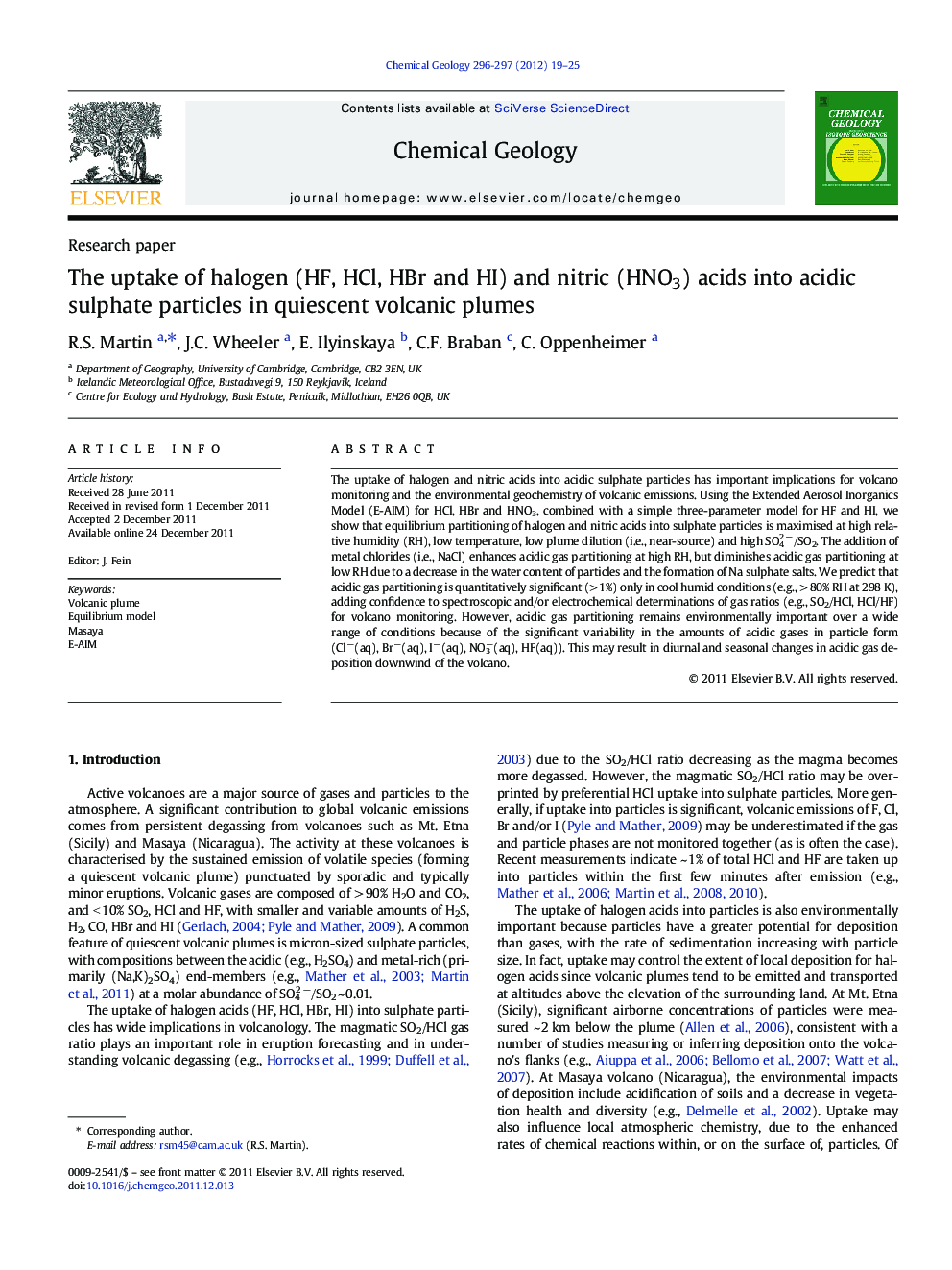| Article ID | Journal | Published Year | Pages | File Type |
|---|---|---|---|---|
| 4699523 | Chemical Geology | 2012 | 7 Pages |
The uptake of halogen and nitric acids into acidic sulphate particles has important implications for volcano monitoring and the environmental geochemistry of volcanic emissions. Using the Extended Aerosol Inorganics Model (E-AIM) for HCl, HBr and HNO3, combined with a simple three-parameter model for HF and HI, we show that equilibrium partitioning of halogen and nitric acids into sulphate particles is maximised at high relative humidity (RH), low temperature, low plume dilution (i.e., near-source) and high SO42 −/SO2. The addition of metal chlorides (i.e., NaCl) enhances acidic gas partitioning at high RH, but diminishes acidic gas partitioning at low RH due to a decrease in the water content of particles and the formation of Na sulphate salts. We predict that acidic gas partitioning is quantitatively significant (> 1%) only in cool humid conditions (e.g., > 80% RH at 298 K), adding confidence to spectroscopic and/or electrochemical determinations of gas ratios (e.g., SO2/HCl, HCl/HF) for volcano monitoring. However, acidic gas partitioning remains environmentally important over a wide range of conditions because of the significant variability in the amounts of acidic gases in particle form (Cl−(aq), Br−(aq), I−(aq), NO3−(aq), HF(aq)). This may result in diurnal and seasonal changes in acidic gas deposition downwind of the volcano.
► We establish the thermodynamic influences on the chemical evolution of quiescent volcanic plumes. ► The uptake of acidic gases into particles is maximised in cool humid conditions with low plume dilution and high SO42 −/SO2. ► F, and to a lesser extent Br and I, are enriched relative to Cl in particles at low relative humidity.
